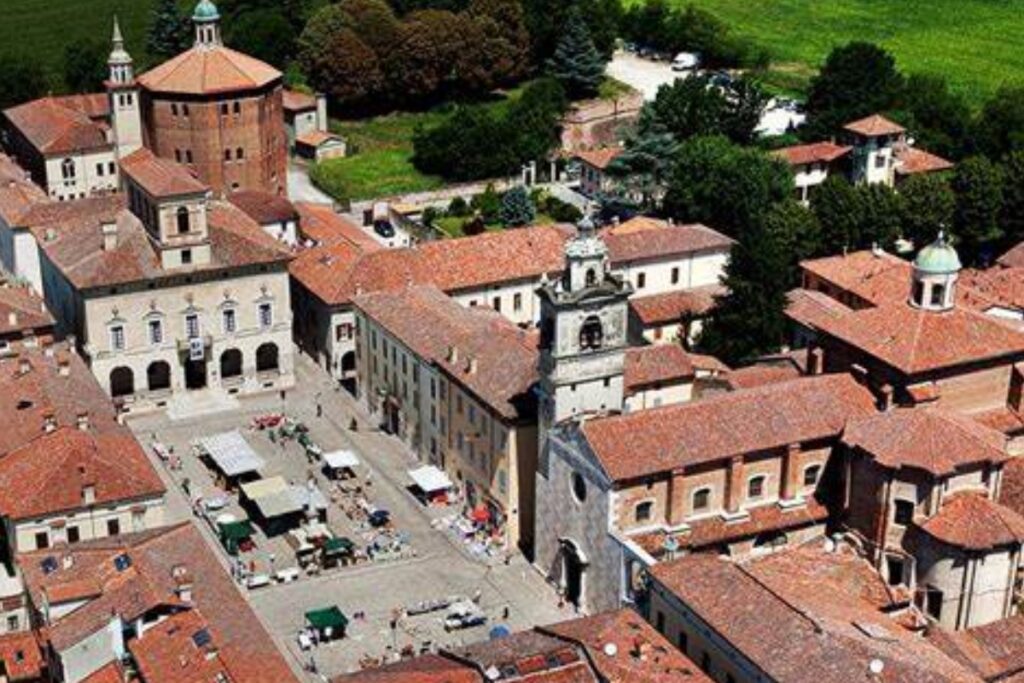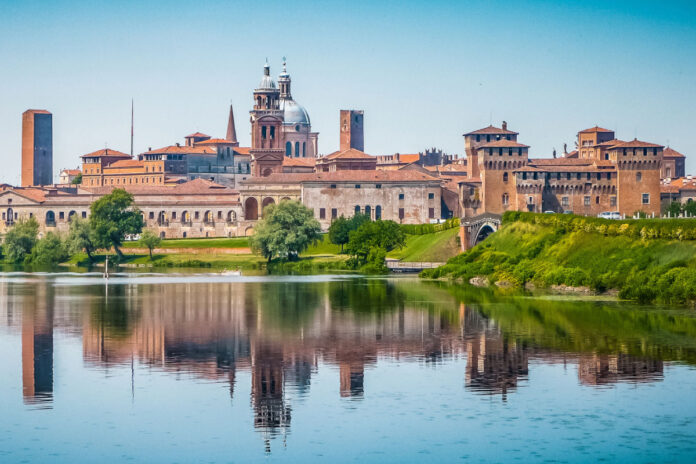Discover Mantua, Italy – a historic city renowned for its Renaissance architecture, rich cultural heritage, and scenic beauty. Explore its unique attractions, and delicious cuisine, and understand why Mantua is a must-visit destination.
Italy is a country known for its rich history, stunning architecture, and vibrant culture. Among its many treasures is Mantua, a city that stands out for its Renaissance architecture, historical significance, and scenic beauty. Nestled in the Lombardy region, Mantua is a gem that offers a unique blend of art, history, and natural beauty. Whether you’re wandering through its ancient streets, exploring its magnificent palaces, or savoring the local cuisine, Mantua promises an unforgettable experience.
A Brief History of Mantua

Mantua, or Mantova in Italian, has a history that dates back to ancient times. The city was originally founded by the Etruscans and later became a Roman settlement. During the Middle Ages, Mantua was ruled by the powerful Gonzaga family, who transformed the city into a cultural and artistic hub. Under their patronage, Mantua flourished, becoming one of the most important cities of the Italian Renaissance. The influence of the Gonzaga family is evident in the city’s stunning architecture and rich cultural heritage.
The Architectural Marvels of Mantua
Mantua is renowned for its well-preserved Renaissance architecture, which has earned it a place on the UNESCO World Heritage list. The city’s architectural masterpieces reflect its glorious past and offer a glimpse into its rich history.

Palazzo Ducale (Ducal Palace)
One of Mantua’s most iconic landmarks is the Palazzo Ducale. This sprawling complex of buildings served as the residence of the Gonzaga family and is a testament to their wealth and power. The palace is home to numerous courtyards, gardens, and over 500 rooms adorned with stunning frescoes, tapestries, and artworks. Highlights include:
- Camera degli Sposi (Bridal Chamber): Decorated with frescoes by Andrea Mantegna, this room is considered one of the masterpieces of Renaissance art.
- Sala del Labirinto (Hall of the Labyrinth): Known for its intricate ceiling design and beautiful decorations.
- Basilica di Santa Barbara: Located within the palace complex, this church features a stunning interior and beautiful artworks.
Palazzo Te
Another architectural gem in Mantua is Palazzo Te, a magnificent villa built by Federico II Gonzaga. Designed by the renowned architect Giulio Romano, the palace is a masterpiece of Mannerist architecture. Highlights include:
- Sala dei Giganti (Hall of the Giants): Famous for its dramatic frescoes depicting the fall of the Giants, which create an illusion of three-dimensional space.
- Sala di Amore e Psiche (Room of Love and Psyche): Adorned with beautiful frescoes that narrate the love story of Cupid and Psyche.
- Loggia di Davide (Loggia of David): Featuring frescoes depicting scenes from the life of King David.
Basilica di Sant’Andrea
The Basilica di Sant’Andrea is one of Mantua’s most important religious buildings. Designed by Leon Battista Alberti, this stunning basilica features a grand facade and an impressive interior. It houses the relic of the Precious Blood, a vial of Christ’s blood, which attracts pilgrims from around the world. The basilica’s beautiful frescoes and architectural details make it a must-visit site.
Exploring Mantua’s Cultural Heritage
Mantua’s rich cultural heritage is reflected in its museums, theaters, and festivals, which celebrate the city’s artistic and historical legacy.

Teatro Bibiena
The Teatro Bibiena is a small yet exquisite theater known for its stunning baroque design and exceptional acoustics. Inaugurated in 1769, it hosted a performance by the young Wolfgang Amadeus Mozart. The theater’s ornate decorations and intimate atmosphere make it a true architectural gem.
Museo di Palazzo d’Arco
The Museo di Palazzo d’Arco is a museum housed in a beautiful neoclassical palace. It features a rich collection of art, furniture, and historical artifacts, offering a glimpse into the aristocratic life of Mantua’s past. Highlights include the frescoed Zodiac Room and the family’s private apartments.
Mantua Literature Festival
Every September, Mantua hosts the Festivaletteratura, one of Italy’s most important literary festivals. The event attracts writers, poets, and literary enthusiasts from around the world for a week of readings, discussions, and cultural events. It’s a vibrant celebration of literature and culture.
Savoring Mantua: Culinary Delights
Mantua’s cuisine is a reflection of its rich agricultural traditions and historical influences. The city offers a variety of delicious dishes that are sure to delight your taste buds.

Traditional Dishes
- Risotto alla Pilota: A traditional risotto made with pork sausage, named after the workers (piloti) who used to husk rice.
- Tortelli di Zucca: Pumpkin-filled pasta served with butter and sage, a sweet and savory dish that’s a local favorite.
- Cotechino: A flavorful sausage made from pork, traditionally served with lentils or mashed potatoes.
Desserts and Sweets
- Sbrisolona: A crumbly almond cake that’s a local specialty, often enjoyed with a glass of sweet wine.
- Torta di Tagliatelle: A unique cake made with layers of tagliatelle pasta, almonds, and sugar.
Where to Stay in Mantua
Mantua offers a range of accommodations to suit every taste and budget, from charming bed and breakfasts to luxurious hotels.

Recommended Accommodations
- Hotel Casa Poli: A stylish boutique hotel located in the heart of Mantua, offering modern amenities and elegant decor.
- Palazzo Castiglioni: A historic palace turned hotel, providing a unique and luxurious experience with beautifully decorated rooms and a central location.
- Residenza La Villa: A charming bed and breakfast set in a restored villa, offering a peaceful retreat with beautiful gardens and cozy rooms.
Practical Tips for Visiting Mantua

- Best Time to Visit: Spring and fall are the best times to visit Mantua, as the weather is mild and the city is less crowded. Summer can be hot, but it’s also when many festivals and events take place.
- Getting There: Mantua is easily accessible by train from major cities like Milan, Venice, and Florence. The city is also conveniently located near the A22 highway, making it easy to reach by car.
- Getting Around: Mantua is best explored on foot, as the historic center is compact and pedestrian-friendly. Biking is also a popular option, with several bike rental services available.
Mantua’s Festivals and Events
Mantua hosts several festivals and events throughout the year, offering visitors a chance to experience the local culture and traditions.

Important Festivals
- Mantua Chamber Music Festival: Held in May, this festival features performances by renowned chamber musicians in various historical venues around the city.
- Mantua Jazz Festival: An annual event celebrating jazz music with concerts, workshops, and performances by international and Italian artists.
- Rievocazione Storica: A historical reenactment festival held in June, featuring parades, medieval games, and performances that bring Mantua’s history to life.
Exploring the Surrounding Area
Mantua’s location in Lombardy makes it a great base for exploring the surrounding area. Here are some nearby attractions worth visiting:

- Parco del Mincio: A beautiful natural park located just outside Mantua, perfect for hiking, biking, and birdwatching.
- Sabbioneta: A nearby town known for its well-preserved Renaissance architecture and historical significance. It’s often referred to as the “Little Athens of the Renaissance.”
- Verona: Just a short train ride away, Verona is famous for its Roman amphitheater, beautiful historic center, and Shakespearean connections.
FAQs About Mantua
Q: What makes Mantua unique?
A: Mantua is unique for its well-preserved Renaissance architecture, rich cultural heritage, and scenic beauty. The city’s blend of history, art, and natural landscapes makes it a captivating destination.
Q: How many days should I spend in Mantua?
A: A stay of 2-3 days is ideal to explore the main attractions, enjoy the local cuisine, and experience the city’s charm. However, you can easily spend more time if you plan to explore the surrounding areas.
Q: Is Mantua suitable for families?
A: Yes, Mantua is family-friendly with plenty of historical sites, outdoor activities, and unique experiences that children will enjoy.
Wrapping Up Your Mantua Adventure
Mantua is a city that captivates with its timeless beauty and rich history. Whether you’re exploring the magnificent palaces, wandering through the medieval streets, or savoring the local cuisine, Mantua offers an unforgettable experience. So, pack your bags and get ready to explore the magic of Mantua, Italy’s enchanting city of history and culture.
Visiting Mantua is like stepping into a different era. The well-preserved architecture, vibrant cultural scene, and warm hospitality of the locals make it a must-visit destination in Italy. Whether you’re a history buff, a foodie, an art enthusiast, or just looking for a unique travel experience, Mantua has something to offer everyone.
So why wait? Make Mantua your next travel destination and uncover the timeless beauty and charm of this incredible city. You won’t regret it.




